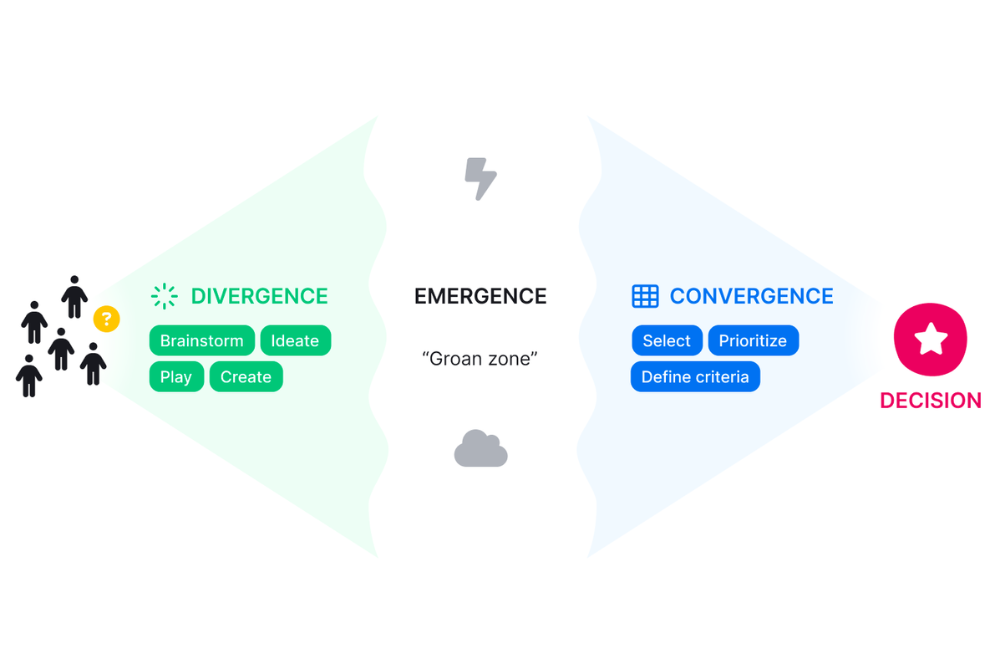Decision-Making Meeting

The objective of this half-day session is for a team to reach a shared decision on how to solve a problem or challenge.
The first part is a divergent process in which different ideas and proposals are collected. The second uses consent-based decision-making to refine a proposal and turn it into a decision.
Objectives
- Include everyone in a collective decision;
- Build community;
- Improve engagement for implementation;
- Take high-quality decisions.
Materials
Attachments
- 2018-06-01 18.46.48.jpg
- Check in questions cover.PNG
- Dotmocracy cover image.PNG
Instructions
This half-day session illustrates a complete flow from ideation to decision. You will find information and details on the following steps:
- presenting a challenge to a team;
- ideating multiple solutions (divergence);
- selecting one or more proposals to work on using dot-voting (convergence);
- using consent-based decision-making to refine the proposal;
- turning the proposal into a shared decision;
- celebrating!
Gerard Endenburg, the founder of Sociocracy (an organizational framework based on consent) defined three requirements for a group to be able to use consent as its decision-making mechanism:
- The group is able and willing to discuss together long enough to resolve objections;
- The group shares a common aim;
- Defined membership (knowing who is part of the group and who is not).
Consent-based decisions require training and effort on the part of all the people involved and are therefore most often used either in organizations designed for equality and/or for decisions of high importance.
Examples of contexts where this flow could be useful include setting visions and values for a company, and strategic decisions.
The first section, going from brainstorming to narrowing down options, is common also to consultations, in which after this process it’s up to a person in charge to decide.
Timings in this template are based on experience facilitating a small, cohesive group with some experience deciding together. Decision-making by consent can get very fast and efficient indeed but might take some more time at first, or with larger groups.
You might consider adding more time to rounds designed to clarify and amend the proposal or divide the process into two 2-hour sessions, one for consultation and one for decision-making.
You can also consider the option of runnings parts of this session asynchronously as a written consultation (on a shared document or virtual whiteboard, for example), and of separating the meeting into two different days, one for the consultation process and one for decision-making.
You can also factor some part of this process into regular team meetings such as those featured in this collection of meeting agenda templates.
Who can facilitate this decision making meeting?The scripts for consent-based decision-making are quite clear and well illustrated in a lot of dissemination material connected to Sociocracy (and Holacracy as well, a related management framework). Any facilitator should be able to pick them up quite easily but do consider decades of R&D have gone into perfecting them, so try them as they are before tweaking and making changes!
The website Sociocracy for All is packed with useful materials, and for a more in depth study look for the book Many Voices One Song.
Author
At SessionLab, we are passionate about facilitation. We believe good workshop design leads to better collaboration, enabling people to achieve great things. SessionLab is the go-to platform for session design, with an agenda planning tool, library of facilitation resources and vibrant community for facilitators. It enables facilitators to streamline workshop design through drag-and-drop scheduling, automatic timing and seamless sharing with clients and colleagues.